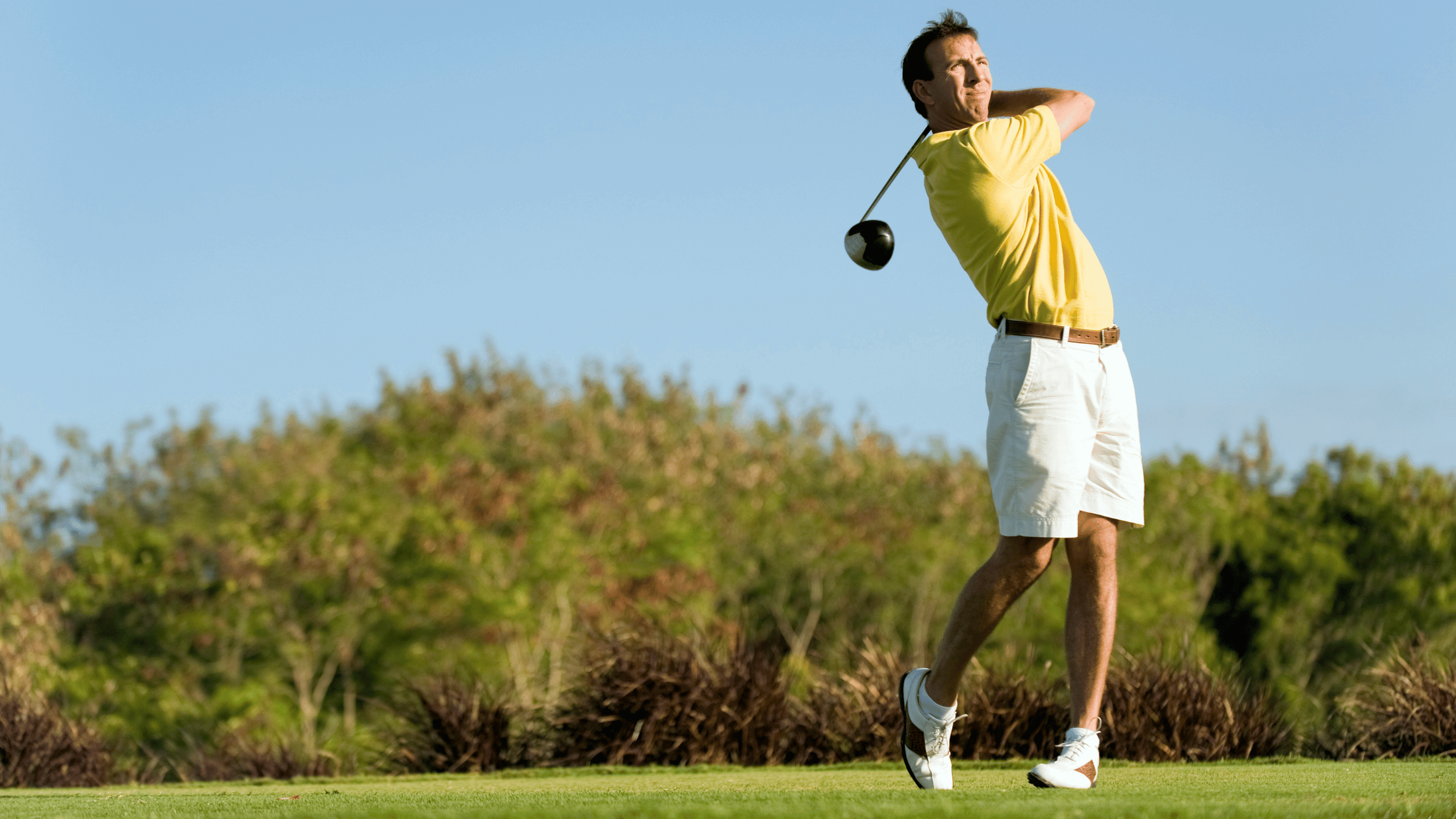Understanding the Importance of Swing Speed in Golf: Key Factors and Improvement Tips

Licensed Physical Therapist, PT, DPT // Dry Needling Certified // Titleist Performance Institute Certified // Director of Player Development, EW Golf // EW Motion Therapy Homewood // EW Motion Therapy Trussville
Golf demands a nuanced understanding of various techniques, including swing speed. It is a critical component in determining the distance and trajectory of a golf ball. But why exactly is swing speed so pivotal in golf? Also, what do you do if your swing speed is not at the level you want? While there are things you could address with your pro or swing coach, your underlying issues might be getting in the way of your optimal performance. A physical therapist can be a great professional to step in and assess you for movement deficits affecting your swing - we love doing this for our golfers every day at EW Motion Therapy. But even if you decide that our services doesn’t fit your needs, you can still read on as we delve into the intricacies of swing speed, exploring its significance, the factors that influence it, and practical tips to enhance it. Whether you're a seasoned golfer or a novice, understanding and improving your swing speed can be a game-changer.
The role of swing speed in golf
Swing speed in golf refers to how fast the clubhead moves through the air during a swing. It's measured in miles per hour (mph) and directly correlates to how far you hit the golf ball. A faster swing speed generally translates into a longer shot. However, it's not just about speed; it's about efficiency - balancing speed and control to ensure accuracy and consistency in your shots.
Factors impacting swing speed
Several elements come into play when it comes to swing speed. Understanding these can help golfers make informed adjustments to their technique and equipment.
Physical fitness and flexibility
Physical fitness plays a crucial role in achieving an optimal swing speed. Core strength, leg strength, flexibility, and overall condition significantly influence your ability to generate power and control during the swing. Greater flexibility allows for more width in the swing and greater rotation which can contribute to increased speed. Increasing leg strength allows you to push through the ground more and increased core strength contributes to greater rotational strength, thus more speed through the ball.
Technique and mechanics
The way you swing the club is also pivotal. Proper golf mechanics, including stance, grip, and posture, are foundational to maximizing swing speed. An inefficient swing technique can lead to energy loss and reduced speed, even if you have considerable physical strength.
Golf equipment
The type of club you use also affects your swing speed. Different clubs accommodate various swing speeds and skill levels. Factors such as the club’s weight, length, and shaft can either enhance or hinder your ability to generate speed.
Tips to improve swing speed
Enhancing your swing speed is not just about swinging harder; it's about swinging smarter. Here are some tips to help you boost your swing speed effectively.
Focus on strength and flexibility
Engage in exercises that enhance your leg, core, and flexibility. specific golf-related fitness routines can improve your range of motion and muscle power, translating into a faster swing. Yoga and Pilates might be good options to improve flexibility and core strength. Remember, a strong, flexible body can generate speed without sacrificing control.
Perfect your technique
Work with a golf instructor to refine your swing mechanics. Focus on aspects such as your grip, stance, and swing sequence. Understanding the biomechanics of an efficient swing can significantly improve your speed.
Use the right equipment
Consult with a golf professional to ensure your clubs fit your swing style and speed. Adjusting the club's specifications can substantially affect your performance.
Practice consistently
Like any skill, improving your swing speed requires consistent practice. Dedicate time to work on your swing, focusing on speed and accuracy. Use drills and exercises that specifically target the elements of a faster swing.
Monitor and measure your progress
Technology can be a great ally in your quest to increase swing speed. Use tools like launch monitors to measure your speed and track your progress. This data can provide valuable insights into what works and what needs improvement. Speed trainers such as weighted clubs require the body to work harder to swing at the same speed, which can improve baseline speed and efficiency.
How physical therapy can enhance golf swing speed
Physical therapy plays a pivotal role in helping golfers improve their swing speed. By addressing physical limitations and enhancing body mechanics, physical therapy can be a game-changer for golfers looking to elevate their performance. Let's explore how physical therapy can contribute to increasing swing speed.
Addressing mobility and flexibility issues
Physical therapists are experts in improving mobility and flexibility, which are crucial for an efficient golf swing. They can assess and treat limitations in the range of motion, particularly in the hips, shoulders, and spine, critical areas involved in a golf swing. Through targeted exercises and stretches, physical therapists can help golfers achieve a longer, more efficient swing, leading to increased speed.
Strengthening core and golf-specific muscles
A strong core and legs are essential for a powerful golf swing. Physical therapists can design exercise programs that focus on strengthening the muscles most used in golf, including the core, glutes, and back muscles. These programs enhance power and speed and reduce the risk of injury, allowing golfers to play more consistently and confidently.
Improving posture and body mechanics
Proper posture and body mechanics are fundamental for an effective and efficient golf swing. Physical therapists can analyze a golfer’s posture, identifying and correcting flaws hindering swing speed. They can also provide education on proper body alignment and movement patterns, ensuring that golfers utilize their bodies optimally during the swing.
Injury prevention and rehabilitation
Physical therapy is not just about rehabilitation; it's also about prevention. By addressing imbalances and weaknesses, physical therapists can help golfers reduce the risk of golf-related injuries that might otherwise sideline them and affect their swing speed. Physical therapists can develop tailored rehabilitation plans for those recovering from injuries that safely and effectively get them back to their optimal playing condition.
Customized exercise programs
Every golfer is unique, and physical therapists understand this. They can create customized exercise programs that cater to an individual golfer’s needs, considering their physical capabilities, limitations, and specific goals. This personalized approach ensures that golfers are working on areas that will most effectively improve their swing speed and overall performance.
Swing speed is a crucial factor in golf, impacting distance of your shots. You can significantly improve your swing speed by focusing on physical fitness, perfecting your technique, choosing the right equipment, practicing regularly, and monitoring your progress. Incorporating targeted training into a golfer’s routine can significantly impact their swing speed and overall game. By enhancing flexibility, strength, posture, and body mechanics and by focusing on injury prevention and rehabilitation, physical therapists provide invaluable support to golfers aiming to improve their performance. Embracing the expertise of physical therapists can lead to notable improvements in swing speed, helping golfers achieve their full potential on the course. We consider it a privilege to help our golfers at EW Motion Therapy do this daily. If you’re curious about other ways to increase your distance, click the button below to download our free ebook.


